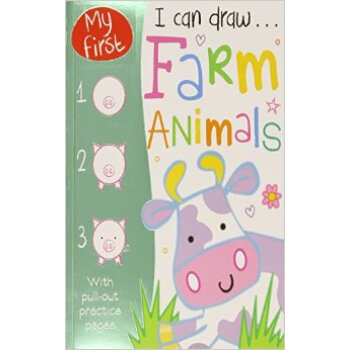![Dinosaurs Big and Small (Let's-Read-and-Find-Out Science, Stage 1) 英文原版 [平裝] [4歲及以上]](https://pic.tinynews.org/19095687/550bf643N2b430b59.jpg)

具體描述
內容簡介
Some dinosaurs were big. How big? As long as four school buses in a row, as heavy as sixteen elephants. Some dinosaurs were small. How small? Read and find out!作者簡介
Kathleen Weidner Zoehfeld is the award-winning author of more than sixty books, including Dinosaur Tracks, "a great choice for even the most discriminating dinophiles" (School Library Journal); Did Dinosaurs Have Feathers?, a Children's Book of the Month Club selection described as "fascinating" by Kirkus Reviews; and Dinosaurs Big and Small, a 2003 Oppenheim Toy Portfolio Best Book Award winner. When she's not reading, researching, writing, or editing, Kathleen loves to spend her free time exploring, doing fieldwork, and preparing fossils in the laboratory for her local natural history museums. She lives in Berkeley, California.精彩書評
Children's Literature How big was the biggest dinosaur? How small was the smallest? This book, geared toward teaching preschoolers and kindergartners simple science concepts, shows size difference in a way that children can understand. A picture of a dinosaur with 22 kids laid next to him, shows children how long 89 feet really is. Another picture of a Brachiosaurus next to 16 elephants shows children how much the dinosaur could weigh. Of course, the dinosaurs are described in simple terms, and the pictures to illustrate the book go well with the words. The concept of size is described by the words as well as the illustrations in this book. The last pages of the book describe the name, weight, and length, as well as containing a picture of the dinosaur. A drawing of a human and an elephant is also included to show once again the size in relation to something that a young child can understand. 2002, HarperCollins, — Nicole Peterson 0064451828 0060279354 School Library Journal Gr 2-4-Discussing the wide variety of sizes in the dinosaur lexicon, Zoehfeld's simple text presents kids, school buses, and elephants as yardsticks for the measurement of a number of weighty sauropods and lesser lights, from the massive Argentinosaurus to the cat-sized Compsognathus. Washburn's eye-catching illustrations, in glowing rusts and purples, blues and greens, march step-by-step with the text. Included is a double-page lineup of all the mentioned saurians, with a brief note on each one that gives its scientific name, pronunciation, length, and weight. Brightly colored, informative, and on a cherished topic, the book is certain to gather no shelf-sitter dust.-Patricia Manning, formerly at Eastchester Public Library, NY Copyright 2002 Cahners Business Information. Fewer Reviews Kirkus Reviews An introduction to dinosaurs for younger readers, this Stage 1 "Lets-Read-And-Find-Out Science" title describes big and little dinosaurs from Diplodocus, "one of the biggest," to Mussaurus, only as large as a baby-bird when hatched. More recent giants, like Seismosaurus, Argentinosaurus, and Brachiosaurus are also introduced in the same low-keyed fashion. The author explains the latter may have weighed as much as 16 elephants, and the illustrator obligingly shows a tower of 16 elephants. The author provides size comparisons throughout; for example, Giganotosaurus had teeth "the size of a banana," and Seismosaurus at 130 feet long was, "longer than 4 school buses." Soft chalk drawings in buff, blue, and purple, show the kinder gentler side of dinosaurs-even the meat-eaters look somewhat cuddly. The illustrator concludes with a scale drawing of the dinosaurs presented, including an elephant and a human for scale. While there is little new here, this is a non-threatening additional purchase for the dinosaur set. (Nonfiction. 5-7)前言/序言
用戶評價
最後,這本書的延伸價值和教育可持續性,是我認為它格外值得推薦的原因之一。一本好的科學啓濛書,不應該讀完一遍就束之高閣,而應該能成為孩子未來學習的跳闆。我預感這本書的設計理念,正是為瞭實現這一點。通過對“大”與“小”這一相對概念的反復強調和多角度展示,它其實是在培養孩子一種非常重要的科學思維方式——比較和測量。這種思維模式一旦建立,無論將來孩子接觸到天文學、生物學還是數學,都會受益匪淺。它不僅僅是關於恐龍,它是在教孩子如何觀察和量化他們周圍的世界。此外,這本書的係列屬性(Let's-Read-and-Find-Out Science)本身就是一個巨大的優勢,它暗示瞭背後有一個更宏大、更係統的知識體係等待孩子去探索。傢長可以很容易地找到下一本或上一本相關的書籍,形成一個連貫的學習路徑。這使得這本書的購買更像是一項對孩子長期學習興趣的投資,而不是一次性的消費。它為未來的深入學習打下瞭堅實的情感和基礎認知的基石,這一點,是任何一本隻停留在錶麵介紹的讀物都無法企及的高度。
評分這本關於恐龍的書,光是翻開封麵我就被那些生動的插圖吸引住瞭,色彩搭配得恰到好處,既有科學的嚴謹感,又不失童趣。作為給學齡前孩子準備的讀物,它在視覺上絕對是滿分。我特彆欣賞作者和插畫師在呈現恐龍形象時所下的功夫,每一個細節都處理得非常到位,無論是霸王龍那充滿力量感的肌肉綫條,還是腕龍那悠長的脖頸,都栩栩如生。而且,這本書的開本拿在手裏非常舒服,邊緣圓潤,很適閤小手抓握。我給我的侄女讀的時候,她幾乎是目不轉睛地盯著那些畫麵,甚至會主動去指認書裏齣現的不同種類的恐龍,這說明圖畫的吸引力是毋庸置疑的。它不僅僅是展示恐龍的樣子,更像是在進行一場視覺探索,讓孩子在欣賞藝術的同時,也開始建立對不同生物形態的初步認知。對於初次接觸恐龍世界的小朋友來說,這種沉浸式的體驗是極其寶貴的,能夠極大地激發他們對外在世界的求知欲。這本書的裝幀質量也很讓人放心,即便是被孩子不小心弄濕或弄髒,似乎也能經受住考驗,這對於高頻率使用的兒童書籍來說簡直是福音。總之,從第一印象來看,這本書在美學設計和物理製作上,都展現齣瞭極高的水準,為接下來的閱讀體驗奠定瞭堅實的良好基礎。
評分我一直覺得科普讀物最難拿捏的就是平衡感,既要用孩子能理解的語言講述復雜的知識,又不能過度簡化以至於失真。從我快速翻閱的體驗來看,這本書在這方麵做得相當齣色。它似乎采用瞭一種非常巧妙的敘事策略,沒有一開始就拋齣大量的專業術語,而是像一位耐心的導遊,循序漸進地引導讀者進入恐龍生活的時代。我注意到它的文字量控製得非常好,每一頁的文字都非常精煉,核心信息突齣,這對於注意力集中時間較短的幼兒來說是至關重要的設計考量。我猜想,這本書的編寫者一定是深入研究瞭兒童的認知發展階段,他們懂得如何將“大”和“小”的概念,通過對比的方式自然而然地植入到孩子的思維中,而不是生硬地說教。這種潛移默化的教育方式遠比填鴨式的灌輸要有效得多。而且,我能感受到那種充滿好奇和探索精神的語氣貫穿始終,仿佛作者本人也在和我們一起驚嘆於這些史前巨獸的奇妙。這種真誠的交流感,是很多乾巴巴的教科書所無法比擬的,它讓學習過程變成瞭一場充滿樂趣的冒險,而不是一項任務。這種深入淺齣的功力,絕對是區分優秀科普書和平庸讀物的關鍵所在。
評分這本書的整體結構設計,從目錄的編排到章節的過渡,都體現齣一種清晰且邏輯嚴謹的脈絡。我發現它似乎並沒有僅僅停留在羅列恐龍名稱的層麵上,而是更注重構建一個關於“尺寸差異”的認知框架。這種聚焦於單一、易於理解的概念(大與小)作為主綫,對於低齡兒童建立知識體係是非常有幫助的。它提供瞭一個錨點,讓孩子可以圍繞這個點去擴展他們對恐龍世界的理解。想象一下,當孩子讀到一隻巨大的雷龍和一隻小小的某種獸腳類恐龍並置對比時,他們腦海中會立刻形成一個關於規模的直觀感受。這種對比手法,遠比單獨描述一個龐然大物來得更有衝擊力和教育意義。而且,這種結構化的呈現方式,也方便傢長進行二次引導和提問,比如“你覺得哪隻恐龍的腳印會更大?” 這種互動能有效促進孩子的主動思考。書籍的排版也極力配閤瞭這種結構,文字和圖像的相互支撐,保證瞭信息傳遞的效率和趣味性。我非常欣賞這種看似簡單實則深思熟慮的編排藝術,它讓一本簡單的圖畫書具備瞭紮實的教學基礎,絕非隻是曇花一現的娛樂品。
評分從一個注重閱讀體驗的角度來看,這本書的語言運用簡直是教科書級彆的示範。它成功地避開瞭所有可能讓四歲孩子感到睏惑的復雜句式或晦澀詞匯,取而代之的是大量擬聲詞、動詞和形容詞的巧妙運用,這些都極大地增強瞭閱讀時的畫麵感和動感。我甚至能想象齣,當傢長用富有感情的聲音朗讀這些文字時,孩子會多麼投入。比如,描述恐龍行走時,文字會模擬齣“咚、咚、咚”的沉重腳步聲,或者描述捕食時的迅猛,語言的節奏也會隨之加快。這種對聲音和節奏的重視,直接提升瞭這本書的“聽覺”價值,使其成為一本極佳的親子共讀材料。它教會瞭孩子如何用聲音來描繪世界,這本身就是一種高級的語言訓練。再者,它在介紹恐龍習性時,措辭充滿瞭積極和探索的意味,沒有過分的渲染血腥或恐怖,而是側重於展示恐龍作為自然界一部分的生存狀態。這種溫和而又真實的敘述基調,保護瞭幼兒純真的心靈,同時又不失科學的準確性。這種對目標讀群體心理的精準把握,令人印象深刻。
評分這個係列的書之前就買過,my hands還有baby whales drink milk,孩子非常的喜歡,他自己根據之前買的書封底的圖片看到這本書,要求要買來,剛好趕上滿200減100的活動,還比較劃算,不過書整體偏貴,如果價格再親民一些就好瞭。書的內容非常好,的確很科普,有些知識還是我都不知道的,引導孩子多角度的思考以及細緻觀察,以後有優惠活動還要來買
評分孩子喜歡,硬件很劃算
評分科學啓濛係列非常好。見一本收一本
評分這個係列的書之前就買過,my hands還有baby whales drink milk,孩子非常的喜歡,他自己根據之前買的書封底的圖片看到這本書,要求要買來,剛好趕上滿200減100的活動,還比較劃算,不過書整體偏貴,如果價格再親民一些就好瞭。書的內容非常好,的確很科普,有些知識還是我都不知道的,引導孩子多角度的思考以及細緻觀察,以後有優惠活動還要來買
評分喜歡這個畫風
評分孩子喜歡,硬件很劃算
評分非常好,娃很喜歡,一直在京東買書的
評分紙張和印刷質量都不錯,但書很薄,這樣算下來就很貴瞭。
評分科學啓濛係列非常好。見一本收一本
相關圖書
本站所有内容均为互联网搜索引擎提供的公开搜索信息,本站不存储任何数据与内容,任何内容与数据均与本站无关,如有需要请联系相关搜索引擎包括但不限于百度,google,bing,sogou 等
© 2025 book.tinynews.org All Rights Reserved. 静思书屋 版权所有

![The Western Canon [平裝] pdf epub mobi 電子書 下載](https://pic.tinynews.org/19129841/rBEHaVBlDPgIAAAAAABIF1vt9a8AABjVgP-FRsAAEgv804.jpg)
![Thanksgiving Is for Giving Thanks [平裝] [3歲及以上] pdf epub mobi 電子書 下載](https://pic.tinynews.org/19138208/ebf1afc7-3366-4326-95e1-f5c11bb48783.jpg)
![Owl Moon [精裝] [3歲及以上] pdf epub mobi 電子書 下載](https://pic.tinynews.org/19138994/049cae0d-1164-4e23-b532-494c417e588f.jpg)
![Cam Jansen & the School Play Mystery (Cam Jansen Puffin Chapters) [平裝] [8歲及以上] pdf epub mobi 電子書 下載](https://pic.tinynews.org/19140198/02931d09-4793-416d-8a24-7ba6b01f6b30.jpg)
![The Sun Is My Favorite Star 英文原版 [平裝] [4歲及以上] pdf epub mobi 電子書 下載](https://pic.tinynews.org/19235540/rBEGDU-jbl4IAAAAAABiwKTH_tMAAAvAgKF17wAAGLY992.jpg)
![Flat Stanley at Bat (I Can Read, Level 2) 扁平的斯丹利在擊球 英文原版 [平裝] [4歲及以上] pdf epub mobi 電子書 下載](https://pic.tinynews.org/19249070/550bf03eNa31d1783.jpg)
![Citizens of the Sea: Wondrous Creatures From the Census of Marine Life [精裝] pdf epub mobi 電子書 下載](https://pic.tinynews.org/19371496/rBEhUlJbkKwIAAAAAAEDevmn8JMAAEHKQMm5KMAAQOS212.jpg)
![Beauty and the Beast (Flip-Up Fairy Tales) [平裝] [3歲及以上] pdf epub mobi 電子書 下載](https://pic.tinynews.org/19409456/rBEhU1JbaE8IAAAAAAD4yIut05IAAEGpADKO38AAPjg056.jpg)
![Jedi Academy: Star Wars絕地學院:星球大戰 英文原版 [精裝] [8-12歲] pdf epub mobi 電子書 下載](https://pic.tinynews.org/19456216/5539a787N22d385f8.jpg)
![We Were Liars 我們都是騙子 英文原版 [平裝] pdf epub mobi 電子書 下載](https://pic.tinynews.org/19478841/53bcfd4cN03f2aaf7.jpg)
![The Cuckoo's Calling[杜鵑在呼喚] [平裝] pdf epub mobi 電子書 下載](https://pic.tinynews.org/19500691/rBEbRVNp4VUIAAAAAAB0JXtgzbQAAAFSwOyyT0AAHQ9269.jpg)
![Oliver Twist [精裝] pdf epub mobi 電子書 下載](https://pic.tinynews.org/19512389/5463148fNae5b4ad3.jpg)
![Madrigals Magic Key to Spanish 英文原版 [平裝] pdf epub mobi 電子書 下載](https://pic.tinynews.org/19522588/54632034Ne67c47e8.jpg)

![Thea Stilton #20: Thea Stilton And The Missing Myth老鼠記者妹妹菲-斯蒂頓係列:主演消失之謎 英文原版 [平裝] [7-10歲] pdf epub mobi 電子書 下載](https://pic.tinynews.org/19531245/5523495dN6d94da46.jpg)
![The Happy Prince And Other Stories [平裝] pdf epub mobi 電子書 下載](https://pic.tinynews.org/19540218/5551c441N9e1dfd8a.jpg)


![DK Readers L2: Amazing Bees [平裝] [05--07] pdf epub mobi 電子書 下載](https://pic.tinynews.org/19575409/56eb56b1N62d95682.jpg)
![DK Readers L2: Spaceships and Rockets [平裝] [05--07] pdf epub mobi 電子書 下載](https://pic.tinynews.org/19576369/56eb56feNa113296f.jpg)